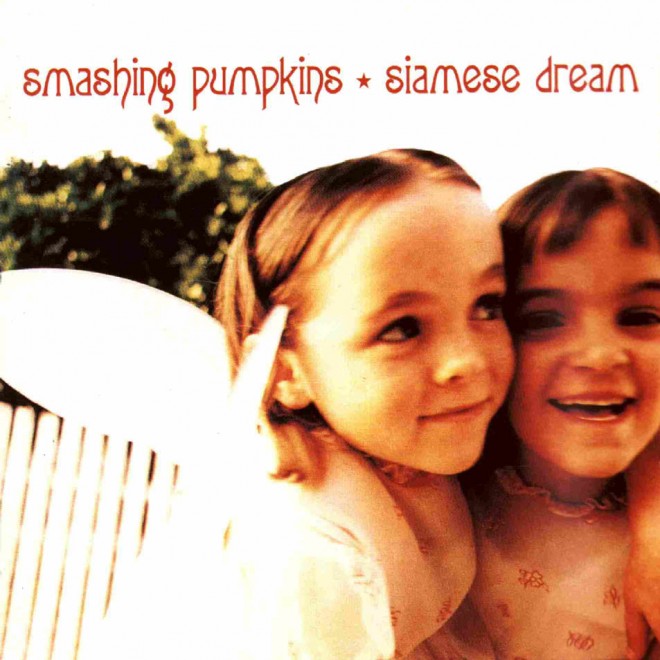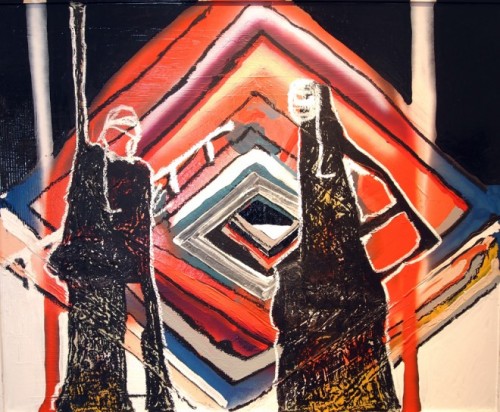
I grew up entirely oblivious to the Smashing Pumpkins, and when I finally did discover the band — with Siamese Dream — I felt as if someone were trying to simultaneously trying to document both the noise and serenity of my childhood. Of course, I wasn’t a little girl dressed as an angel, the nearest white picket fence was miles and miles away, and I didn’t see the world through lomographic Instagram-y filters. In spite of these incongruities, it always felt as if the album latched onto my ears and never let go, and I’m confident that it’s had the same effect on millions of others regardless of background.
It’s hard to describe the way the album moves — it shifts dynamically between quiet and loud passages, but it never seems exceptionally brash. Likewise, even though each track is its own entity, they never seem to diverge from a unified statement. The anthemic blast of “Cherub Rock” doesn’t line up exactly with the aggressive stairway sprint of “Quiet“. Nor does the symphonic cry of “Disarm” clamp onto the gentle feedback of “Soma”. But with that last one, all roughness that might come up is smoothed over by a painfully earnest shimmer. Even when “Soma” suddenly crunches subtlety to dust and Marshall-stacked gain, the integrity of the track’s (maybe even the album’s) heart-on-sleeve howl is untouched. This strange simplicity is something that might be testament to youth — however damaged or imperfect, the one thing it doesn’t lack is clarity.
There are more overt pangs of youth, however, in tracks like “Geek U.S.A.”, whose instrumentation, tempo, and timbre flaunt unabashed complexity. The lyrical content is in line with the rest of the album — calling for a return to innocence and dreaming of a world where “the disappointed disappear / like they were never here.” There are similar warm fuzzy fantasies in “Mayonaise” [sic] and “Luna“, but “Geek” combines that fresh-faced wonder with the uninhibited energy of youth. The result is the sound of toddlers running around like demon children, causing pains in the neck of adults in the room, but ultimately with no real consequences to their horseplay. There’s even a naptime-like section in the middle before it kicks up again, illustrating the boundless vigor of childhood.
After the tracks end, they echo in the corner of your mind. There are scraps of melodies and stand-out lyrics, but it’s a vague and faded memory. Judging just from the sentiments of the album as a whole, it’s clear that Billy Corgan and company were harnessing something powerful: joyful, but inherently wistful, and always on the minds of Generation X in the Nirvana nineties. The title is what seems most interesting, then — some sort of dual daydream, between the present and the past.
When the album was still freshly pressed in 1993, it might have been a monument to the simpler times of the years before Gen X’s innocence was sullied. The “siamese dream” was a dream of fond memories, even if they weren’t perfect. In 2012, however, with an 80s/90s fetish running rampant, it’s possible to take the dream in a different context. This generation of new listeners lives with nostalgia as a prominent facet of everyday culture — no longer as just an aside to day-to-day life. Maybe this is why an album like Siamese Dream is still as compelling as it was 20 years ago. It constantly sings praises to the past while being an artifact of the same past that pierces each culture and subculture of today. After all, the gleaming white of the cover’s picket fence will never tarnish, and those two angelic girls — smiling, laughing, and busy being kids — will never grow up.
Artist: Smashing Pumpkins
Album: Siamese Dream
Year: 1994
Tracklist & Review (Allmusic)
For more album art reviews, visit Probably Just Hungry.







